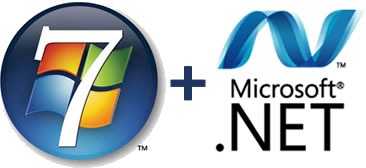 Until now, taking advantage of the UI improvements in Windows 7 (and even some features in Vista) took a fair bit of work – there was a lot of stuff that wasn’t available through the .NET Framework. You’d have to either switch to C++ or resort to hacks in order to access these goodies.
Until now, taking advantage of the UI improvements in Windows 7 (and even some features in Vista) took a fair bit of work – there was a lot of stuff that wasn’t available through the .NET Framework. You’d have to either switch to C++ or resort to hacks in order to access these goodies.
That’s all changed with the newly-released Windows API Code Pack for Microsoft .NET Framework. Written in C# – with some DirectX stuff written in C++ – this library acts as a wrapper that gives managed code access to features including:
- Windows 7 Taskbar Jump Lists, Icon Overlay, Progress Bar, Tabbed Thumbnails, and Thumbnail Toolbars.
- Windows 7 Libraries, Known Folders, non-file system containers.
- Windows Shell Search API support, a hierarchy of Shell Namespace entities, and Drag and Drop functionality for Shell Objects.
- Explorer Browser Control.
- Shell property system.
- Windows Vista and Windows 7 Common File Dialogs, including custom controls.
- Windows Vista and Windows 7 Task Dialogs.
- Direct3D 11.0, Direct3D 10.1/10.0, DXGI 1.0/1.1, Direct2D 1.0, DirectWrite, Windows Imaging Component (WIC) APIs. (DirectWrite and WIC have partial support)
- Sensor Platform APIs
- Extended Linguistic Services APIs
- Power Management APIs
- Application Restart and Recovery APIs
- Network List Manager APIs
- Command Link control and System defined Shell icons
- Shell search API support
- Drag and drop functionality for Shell objects
- Support for Direct2D/Direct3D interoperability
- Support for typography and font enumeration DirectWrite APIs
The system requirements are:
- .NET Framework 3.5 SP1 or later
- Windows 7 RTM (although many features will work on prior versions)
- DirectX features require Windows SDK for Windows 7 RTM
- Some Direct3D samples require the March 2009 release of the DirectX SDK
We’ll cover the Windows API Code Pack for Microsoft .NET Framework over the next little while in a couple of places – certainly on this blog, as well as at the TechDays 2009 cross-Canada conference in the Optimizing Your Apps for the Windows 7 Experience session.
Download Windows API Code Pack for Microsoft .NET Framework (v1.0)